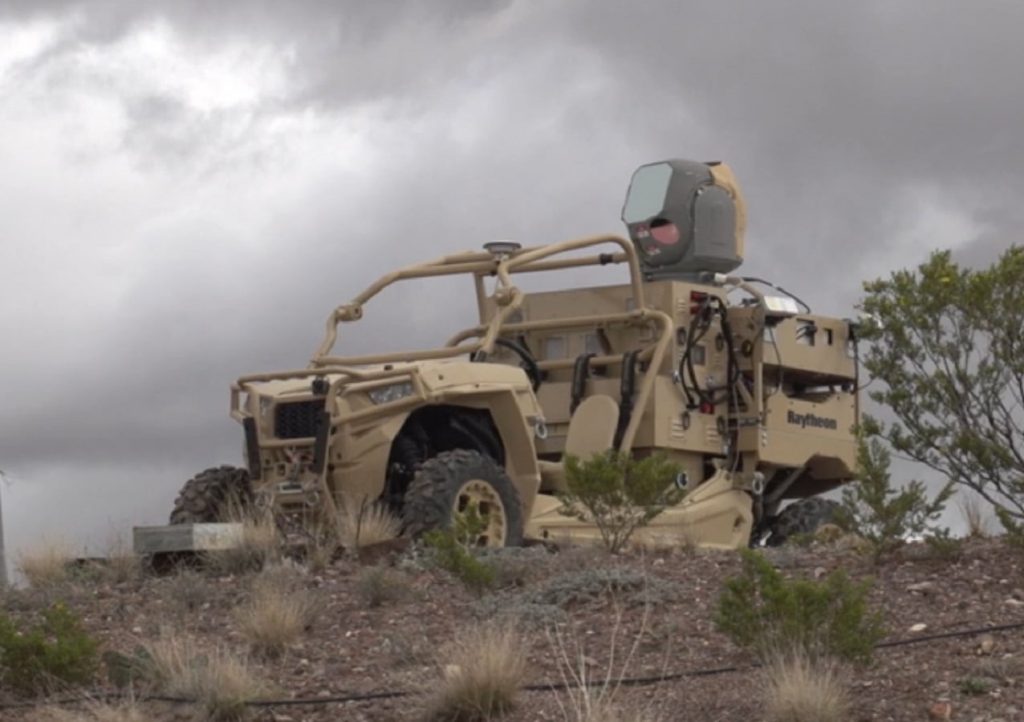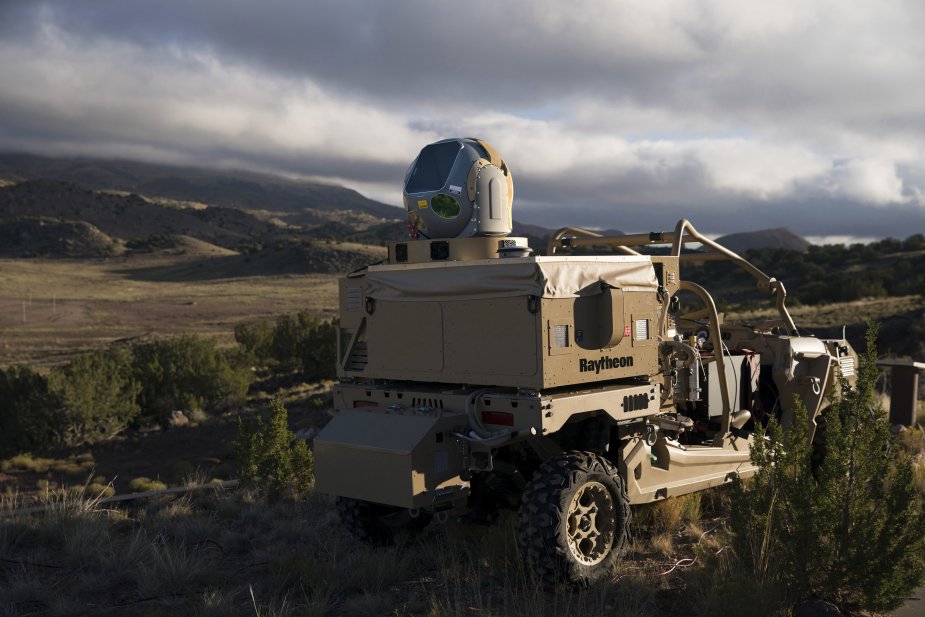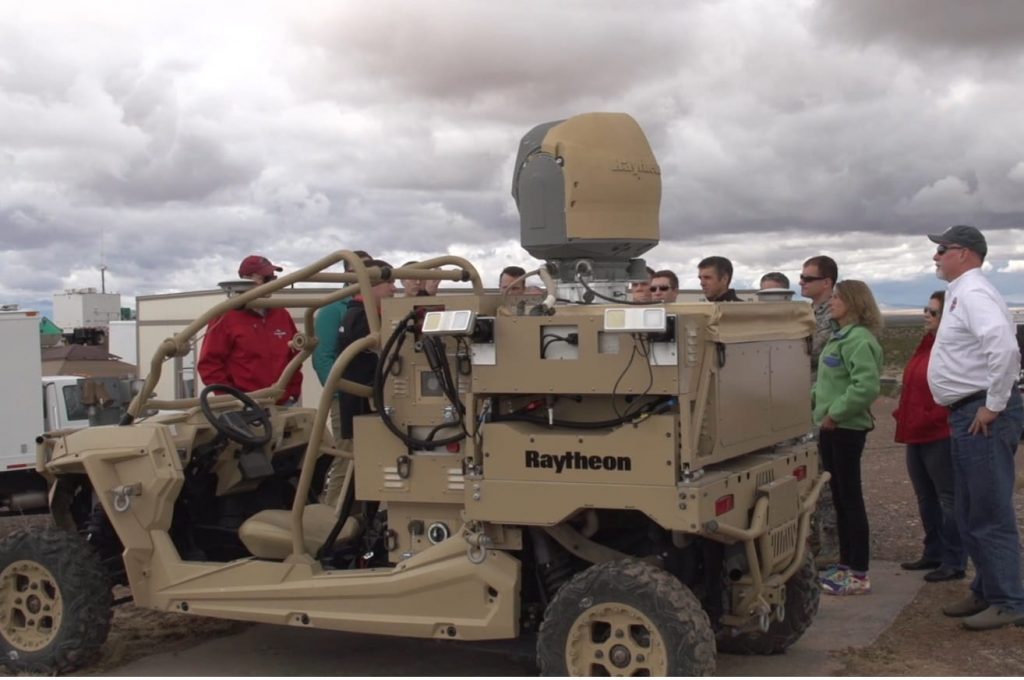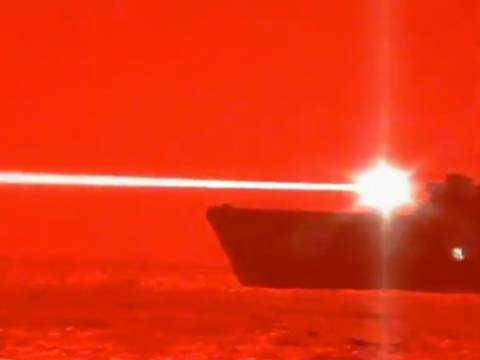Nuclear tank? Are they serious?

Unless they are taking about this thing, this article makes zero sense:




To counter them, the U.S. Army is taking another look at a “devastating” weapon, one first tested by the Air Force and Lawrence Livermore National Laboratory in 2013, the Kinetic Energy Projectile, or KEP, a tungsten-based charge moving at three times the speed of sound that can destroy anything in its path.
Randy Simpson, a weapons programs manager at Lawrence Livermore National Lab, explains that kinetic energy projectiles are warheads that “take advantage of high terminal speeds to deliver much more energy onto a target than the chemical explosives they carry would deliver alone.”
Randy Simpson, a weapons programs manager at Lawrence Livermore National Lab, explains that kinetic energy projectiles are warheads that “take advantage of high terminal speeds to deliver much more energy onto a target than the chemical explosives they carry would deliver alone.”
“They’ve announced that the follow-on tank to the Armata will have a 152-millimeter gun missile launcher. They’re talking about it having a nuclear capability. And you go, ‘You’re talking about building a nuclear tank, a tank that fires a nuke?’ Well, that’s the implication,” said Karber.
And while even Soviet generals may have shied away from using tactical nukes, Blix said, Putin’s military is “a lot more inclined philosophically to see the utility of them.”
Is it similar to Railgun concept ? Firing projectiles ?
GarryB wrote:To counter them, the U.S. Army is taking another look at a “devastating” weapon, one first tested by the Air Force and Lawrence Livermore National Laboratory in 2013, the Kinetic Energy Projectile, or KEP, a tungsten-based charge moving at three times the speed of sound that can destroy anything in its path.
Wow... how could the Russians possible compete... maybe with their 125mm tungsten APFSDS rounds that move at 1.8km/s, which is about mach 5... or almost double the mach 3 (900m/s) speed of this weapon.
Randy Simpson, a weapons programs manager at Lawrence Livermore National Lab, explains that kinetic energy projectiles are warheads that “take advantage of high terminal speeds to deliver much more energy onto a target than the chemical explosives they carry would deliver alone.”
Wow... so what they have developed is a kinetic penetrator... amazing... where do they come up with these ideas...
Randy Simpson, a weapons programs manager at Lawrence Livermore National Lab, explains that kinetic energy projectiles are warheads that “take advantage of high terminal speeds to deliver much more energy onto a target than the chemical explosives they carry would deliver alone.”
Wow... a kinetic penetrator not quite powerful enough to penetrate an enemy tank... haven't they already got those in 120mm?
“They’ve announced that the follow-on tank to the Armata will have a 152-millimeter gun missile launcher. They’re talking about it having a nuclear capability. And you go, ‘You’re talking about building a nuclear tank, a tank that fires a nuke?’ Well, that’s the implication,” said Karber.
What a dick. A kinetic penetrator that can't even penetrate a current tank is hardly the weapon to invest in to use against nuclear weapon armed tanks. This guy is retarded.
And while even Soviet generals may have shied away from using tactical nukes, Blix said, Putin’s military is “a lot more inclined philosophically to see the utility of them.”
What a shit story.
Americans want to spend money developing a new type of kinetic weapon but are desperate for funding and will make shit up like the Russians putting tactical nuclear weapons in their tanks to fire and US forces... how the fuck will a kinetic weapon that can't even reliably penetrate a current Russian tank hope to stop a nuclear shell hitting them... give them lots of money... it will all be over faster when it is all gone.
Is it similar to Railgun concept ? Firing projectiles ?
It is an ineffective EM gun...
The 115mm gun of the T-62 fires a tungsten projectile at higher speeds and is already a mature and developed system.
AlfaT8 wrote:Ok, follow up question.
How effective will the new U.S laser defense system be against past, current and soon to be deployed anti-ship missiles?
 Ok, follow up question.
Ok, follow up question.AlfaT8 wrote:Ok, follow up question.
How effective will the new U.S laser defense system be against past, current and soon to be deployed anti-ship missiles?





ahmedfire wrote:Watch this US Navy ship destroy a flying drone with a laser weapon


Isos wrote:ahmedfire wrote:Watch this US Navy ship destroy a flying drone with a laser weapon
That's a joke. Just look at the dispersion of the laser beam. After around 50m it's 2x bigger than at the beggining. One km away it would have energy to do nothing. Where is the full video ?
Anyone with laser knowledge could analyze my interpretation ? Maybe I'm wrong but it seems to be a weired laser.

GarryB wrote:Notice of all the various systems mentioned there was never a mention of the range it was effective to...
It is probably the future but for now missiles are cheaper and more effective over a much greater area... except if you are the US and have neglected air defence against small drones and need something to leap ahead of the game... I believe it is called clutching at straws... just one of them needs to be a nice strong rope anchored properly to save our asses right...
New wepons against Onyx and Zircon Shocked Shocked

ahmedfire wrote:In 2019 , they said they would have a 300-kilowatt by 2022 and 500 kW by 2024 against cruise missiles .
https://breakingdefense.com/2019/12/exclusive-three-ways-to-kill-cruise-missiles-pentagon-to-test-rival-lasers/
Nuclear tank? Are they serious?
Below table shows that we need a revolution on such technology so that we can use it as a real weapon .
GarryB wrote:Nuclear tank? Are they serious?
I just worked it out... they think that because the Armata will have a 152mm gun it will be able to use the 2.5 kiloton nuclear shell that the Coalition can use.
Dumbasses... when would a tank use such a shell... with a 20 degree gun elevation it wouldn't be able to fire it far enough to be outside its own blast radius...
....you could just go in and lose a few tanks to some bushwacking vermin hiding in the rooftops or you could just load up a nuclear missile and be done with the lot of them.
|
|
|